Today's Fresh Catch are the Audio Note (UK) AN-SPe silver loudspeaker cables, and a set of CDs of performances by Russian conductor Nikolay Golovanov that were sourced from 1940s tapes that were remastered by Anatoly Markovich Likhnitsky.
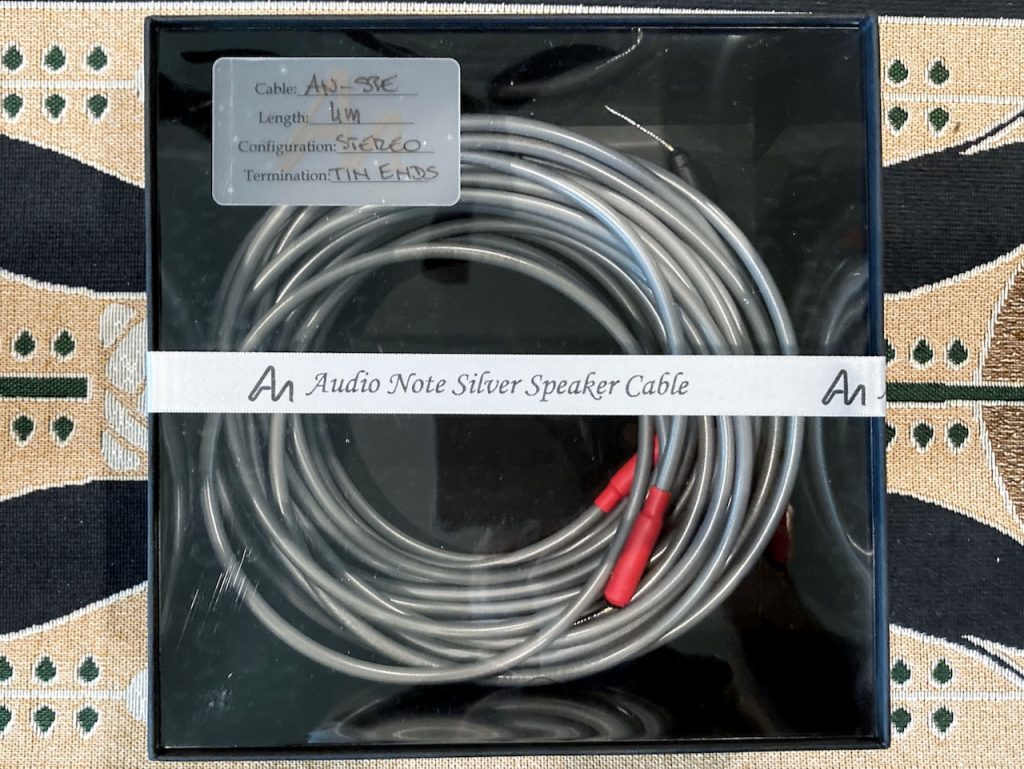
Audio Note (UK) AN-SPe silver loudspeaker cables.
While I have found all of the Audio Note (UK) components I have tried to be excellent matches to my primary music system, Peter wants me to hear as complete of an Audio Note (UK) system as possible (given my loudspeaker constraints), so I can experience the synergy that results from using Audio Note (UK) components together (more on this in a moment).
Audio Note (UK) builds all loudspeaker cables sets to order per customers preferred length, conductor material (copper or silver), terminations (banana or spade connectors), and configuration (single or bi-wire sets).
While Audio Note (UK) offers product lines of both copper and silver cables for their customers, the AN-SPe loudspeaker cables I was sent come from their product line of silver loudspeaker cables.
Given the size of my living room (27’6’’ long by 20’4’’ wide, and with variable ceiling height from 9 to 20 feet), and the position of my vintage Altec loudspeakers and other electronics within the room (loudspeakers are 6 feet out into the room from the front wall, and 8 feet apart), my speaker cables need to be long, around 4 meters or so, to get everything connected together.
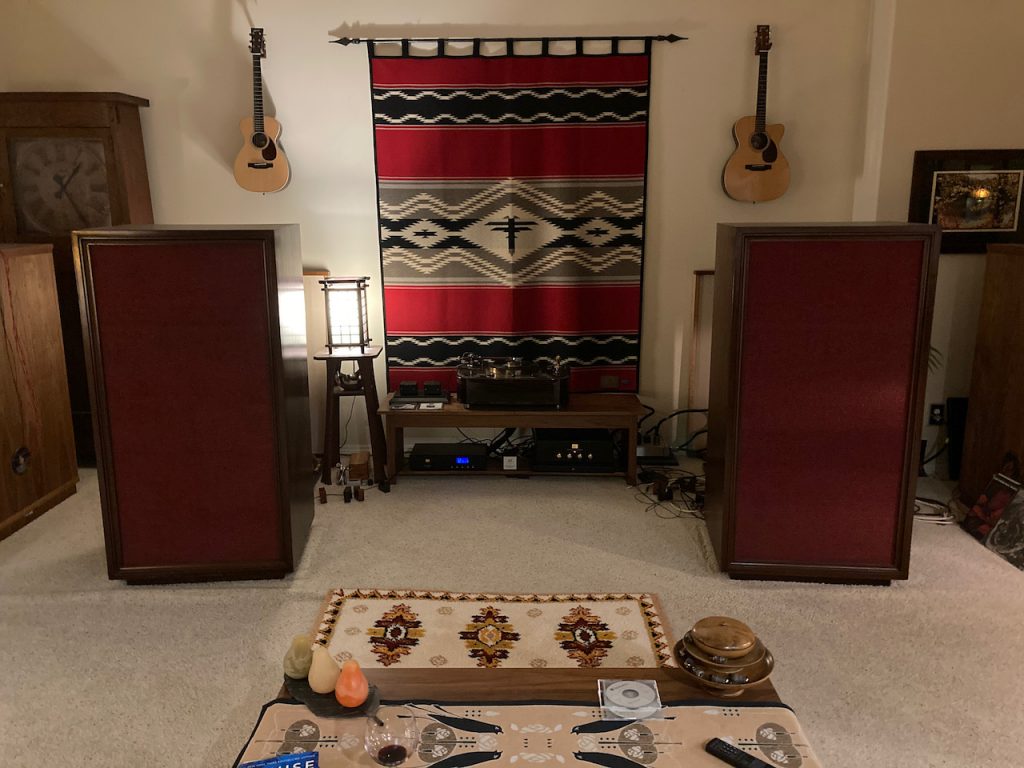
Also, because my current speaker cables - the Duelund DCA16GA tinned-copper speaker cables - are hardwired into the custom Duelund CAST tinned-copper crossovers of my vintage Altec loudspeakers, rather than attached to binding posts, I asked that the AN-SPe silver loudspeaker cables be terminated with bare wire ends, rather than the silver spade or banana connectors they are usually terminated with for customers. The bare wire ends were tinned to keep the silver Litz wires together in a manageable fashion.
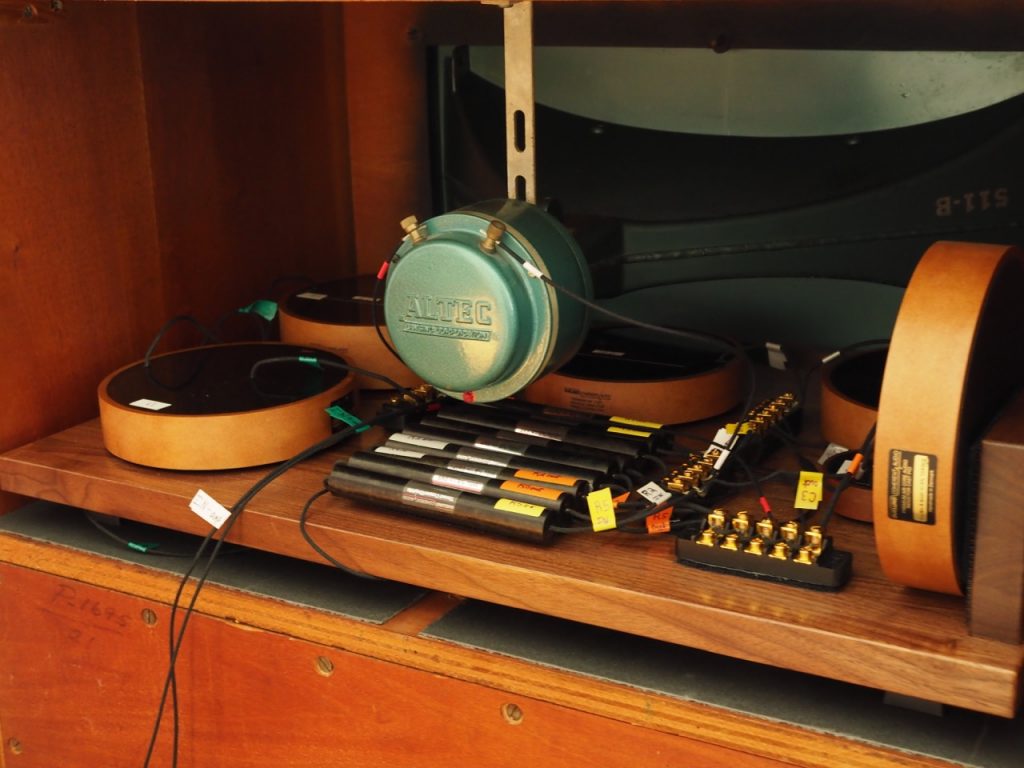
Duelund CAST tinned-copper crossovers in the "Stokowski" Altec loudspeakers.
Audio Note (UK) AN-SPe silver loudspeaker cables utilize 19 strand silver Litz conductors, which are custom drawn to their specific gauge requirements, and then coated in a variety of dielectric polymers depending on the application the particular cable is designed for. The coated Litz conductors are wrapped in a silver colored PVC sleeve to keep everything together.
The USD retail price for AN-SPe silver speaker cables that were sent to me, a 4 meter stereo set, would be priced at $5,228 USD, which is $1307 USD per meter.
Back to the synergy topic I mentioned earlier.
Audio Note (UK) product lines are all designed - from source to loudspeakers - to be a synergistic and complimentary match for each other that enhances overall system performance.
Peter's perspective is that to get the state of art performance from an audio system that he desires for his customers, each component in the system must be designed with the performance of the entire audio system in mind.
Peter's perspective is that when audio enthusiasts put together an audio system with speakers from one company, amplification components from another company, source components from another company, and cables from yet another company, that there are so many variables in play that affect musicality and sound quality, it is likely the customer will not be happy with the overall performance of their audio system using that sort of mix & match approach.
Instead, Peter provides his customers component options at various price points - from source to loudspeakers - that takes the guesswork out of whether a given component will be a good match for their Audio Note (UK) system or not.
Peter wants his Audio Note (UK) customers to be able buy products with confidence, knowing that whatever Audio Note (UK) product they buy, that it will be a complimentary match for their Audio Note (UK) hifi system.
As I know from answering thousands of reader questions about products that will be synergistic with their mix & match systems, these sorts of compatibility issues are the number one reason for distress among many audio enthusiasts.
I have spent a lot of time voicing my various loudspeaker crossovers, amplification components, source components, and cables, to get an overall balance I am happy with from musicality and sound quality standpoints.
It is a long and laborious process of trial & error and continual refinement to go my route, so I completely understand why it would be a much nicer experience for Audio Note (UK) customers to just be able to buy components that are already designed to be a good match, and spend the time and money saved listening to music instead of fiddling with hifi gear.
When Peter says that all of their products are designed to be synergistic and complementary matches for each other, that's not hyperbole, that's exactly what I have experienced with the Audio Note (UK) components I have been listening to in my own reference music system.

Audio Note (UK): CD 2.1x/II Red Book CD player with the Oto Phono SE Signature integrated amplifier.
Peter first sent me the Oto Phono SE Signature integrated amplifier to listen to (review HERE), followed by the Audio Note (UK) CD 2.1x/II Level Two Red Book CD Player (review HERE).
While the Oto and CD 2.1x/II sounded great with all the other components I tried with them, there was no denying that there was a special musical and sound quality synergy when they were used together.
Then the Audio Note (UK) AN-S4 step-up transformer, the Audio Note (UK) AN-V silver interconnects, and the Audio Note (UK) IO I MC phono cartridge arrived, giving me an all Audio Note (UK) analog source to Oto integrated amplifier signal path.
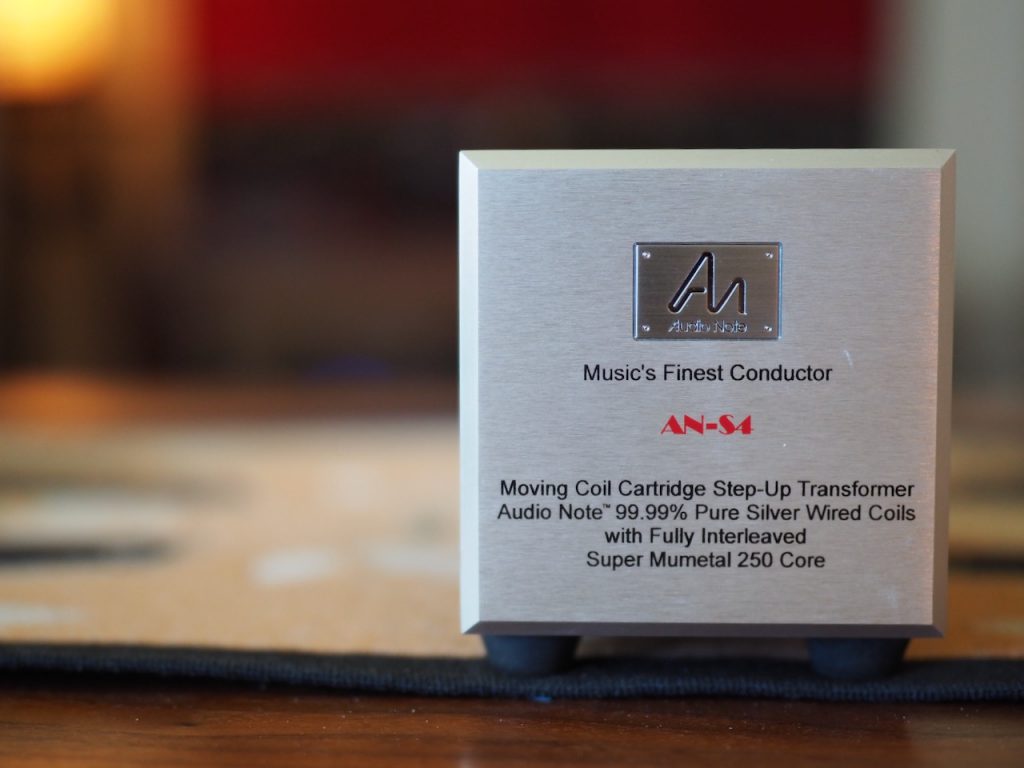
Audio Note (UK) AN-S4 step-up transformer (SUT).
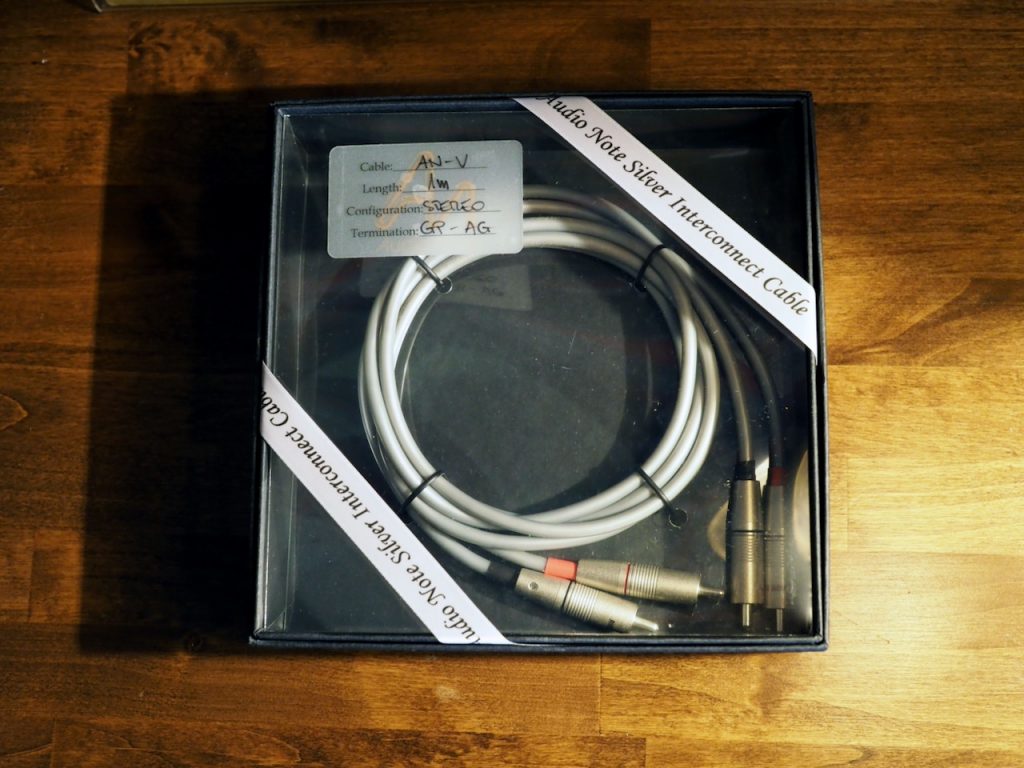
Audio Note (UK) AN-V silver interconnects.
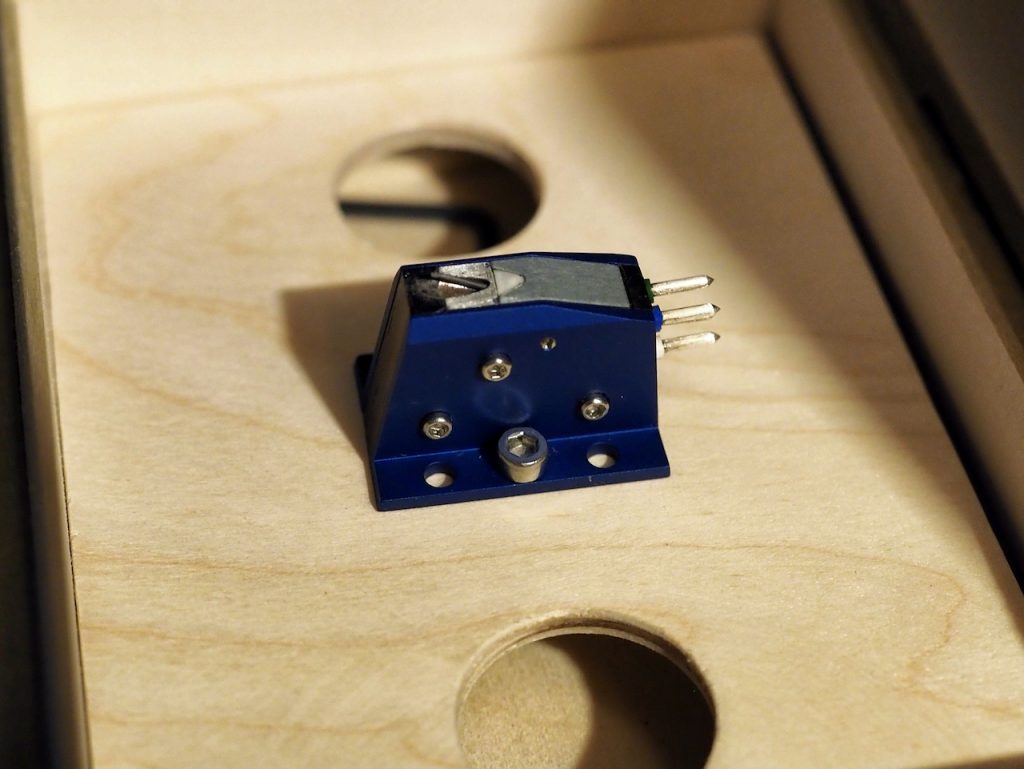
Audio Note (UK) IO I MC Phono Cartridge
While I will be writing up a "first listen" post for you in the near future about that analog front-end combination, I can tell you that the Audio Note (UK) synergy Peter speaks of between components was on full display, and was impressive.
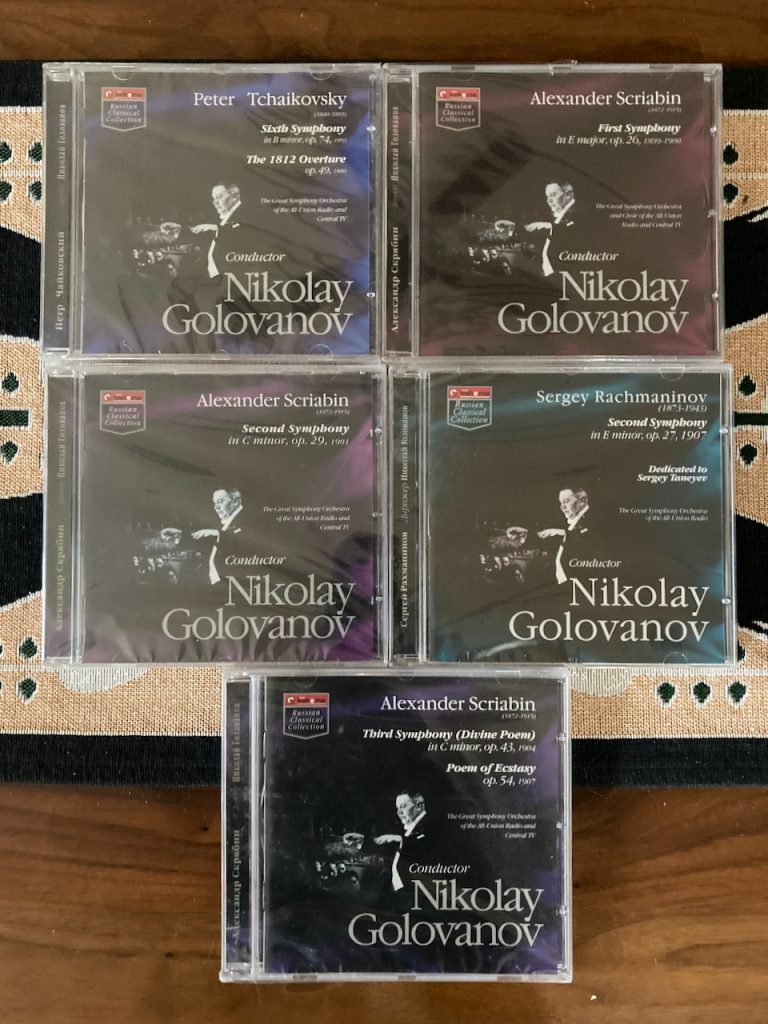
Conductor Nikolay Golovanov (1891 – 1953)
While I'll be writing a dedicated post in due time about the CDs featuring the famous Russian conductor, Nikolay Golovanov (1891 – 1953), that Peter sent along with the speaker cables, let me tell you a little about them now.
Peter told me that Golovanov was apparently Stalin’s favorite conductor, and as a result Golovanov's performances were 'archived' when the political revision took place after Stalin's death (1953).
Golovanov died a few months before Stalin, so Golovanov was not able to defend his reputation and performances, like Maria Yudina did (Stalin’s favorite pianist), so many of his performances were essentially 'lost' to the public.
Peter told me that these CDs were sourced from 1940s tapes that were found in Moscow, forgotten (or hidden) in the basement of a concert hall.
When the tapes were discovered, Peter paid for Anatoly Markovich Likhnitsky to restore them (in 2000), with transfers made for CDs, and in return Peter received a quantity of CDs of each recording.
Stay tuned, there is much more to come about all of these goodies from Peter!
Thanks for stopping by, and may the tone be with you!



























